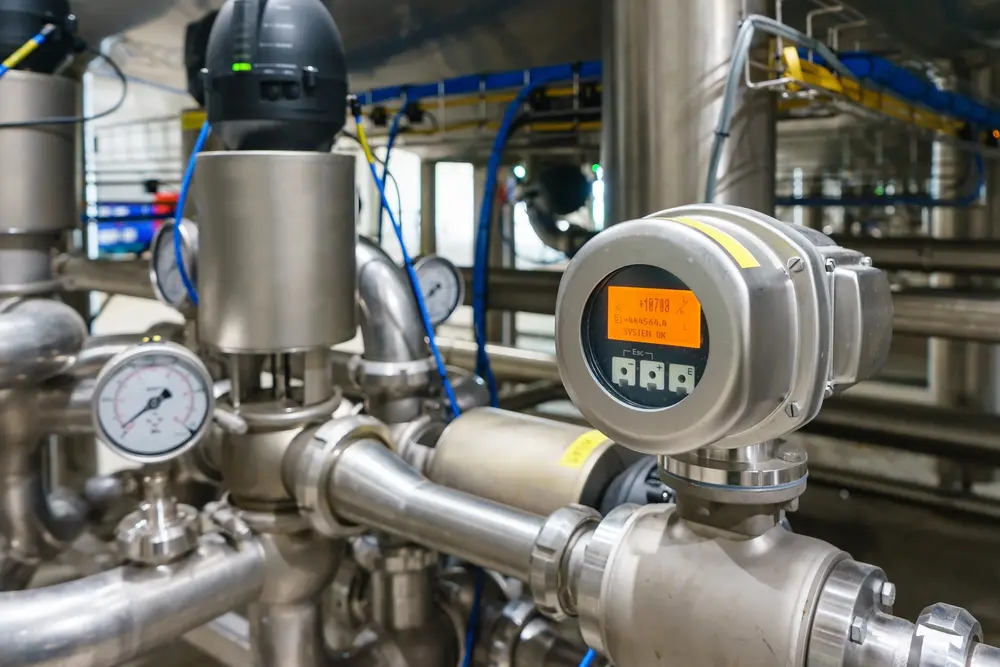Understanding how to install a flow meter is essential for business owners across a variety of industries, as it ensures the accurate measurement of fluid flow. Flow meters are indispensable tools for tracking water in municipal systems, monitoring fuel consumption in manufacturing processes, and measuring chemical flows in laboratory environments. The correct installation of these devices is critical to guarantee precise readings and optimal functioning. This guide aims to provide comprehensive insights into flow meters, emphasizing the importance of proper setup to achieve the best performance and accuracy.
How to Install a Flow Meter: A Step-by-Step Guide for Optimal Accuracy

What is a Flow Meter?
Flow meters are devices specifically designed to measure the rate at which fluids or gases move within a system. They are essential tools across a wide array of industries, ranging from oil and gas to water treatment plants. It becomes easier than ever to identify the inflow and outflow of the liquid and gases in various places with these flow meters.
There are numerous types of flow meters and each one is useful for different uses. For example, turbine flow meters utilize the rotation of a turbine within the fluid stream to determine flow rate, while ultrasonic flow meters use ultrasonic waves to gauge flow velocity.
Depending on the state of the element, fluid properties, and many other things, the engineers choose the right type of flow meter for their needs.
Step-by-Step Guide on How to Install Flow Meter
- First of all, Start by carefully reading the manufacturer’s guidelines and specifications. You can find them in the user manual of the flow meter device.
- After that, select the location to install the flow meter and then collect all the tools required as per the user manual.
- As per the instructions provided in the user manual, start mounting the flow meter at the designated place and fix it properly. As different types of flow meters require different installation processes, you have to refer to the provided user manual.
- Once mounted, you have to connect all the required pipes and hoses. You have to use the proper sealants and gauges for a successful installation. Once completed, you have to seal every joint to avoid any leakage.
- The final step is to complete the calibration process. You can calibrate the flow meter from the base readings and then you are ready to use the flow meter for checking the in and outflow of the gases or liquids.
Common Installation Issues
The first-timers may face a lot of issues while installing a flow meter. In this section, we are covering a few issues and the ways you can tackle them.
1 – Leakage Problems
One of the primary issues encountered is leakage around the flow meter connections. This occurs when seals are not properly installed, or fittings are not tightened properly. The best option is to use industrial-grade sealants to seal all the joints, and you can fix the leakage.
2 – Incorrect Readings
Once installed, the flow meter might provide incorrect readings. This is not a good thing for the businesses as it can cause financial losses. Fortunately, this can be fixed with the manual calibration of the flow meter with the base readings or the instructions provided in the user manual.
3 – Wiring Issues
Some of the flow meters require electrical connections, and there might be some wiring issues for the users. Wrong wiring can cause the device to have a short circuit, which will eventually destroy the flow meter. Hence, it’s required to provide electricity and connect wires properly.
Frequently Asked Questions for How to Install Flow Meter
Q1 – What is the rule of thumb for flow meter installation?
A Flow meter should be installed in a location, where the Turbulence and flow disturbances are absent. This reduces wear and tear and wrong readings and prevents leakage in the long run.
Q2 – Where is the right placement of the flow meter?
The placement of the flow meter should typically be in a straight section of the pipeline where the flow is consistent and uniform.
Q3 – What is the orientation of a flow meter installation?
The orientation of a flow meter installation depends on the type of flow meter being used. In general, most flow meters can be installed either horizontally or vertically. The user manual provided by the manufacturer should be referred to to align the flow meter in the right way.
Final Words
Flow meters play an important part in many industries, and they should be treated as a major component for the proper functioning of the systems. With the main job of computing the inflow and outflow of liquid and gases, it plays an important part in many industries like pharmaceuticals, Petrochemicals, Manufacturing, Electricity, and many others. In this post, we tried our best to share a detailed guide on how to effectively install a flow meter. If you are facing any issues or have some questions, feel free to use the comments section below.
